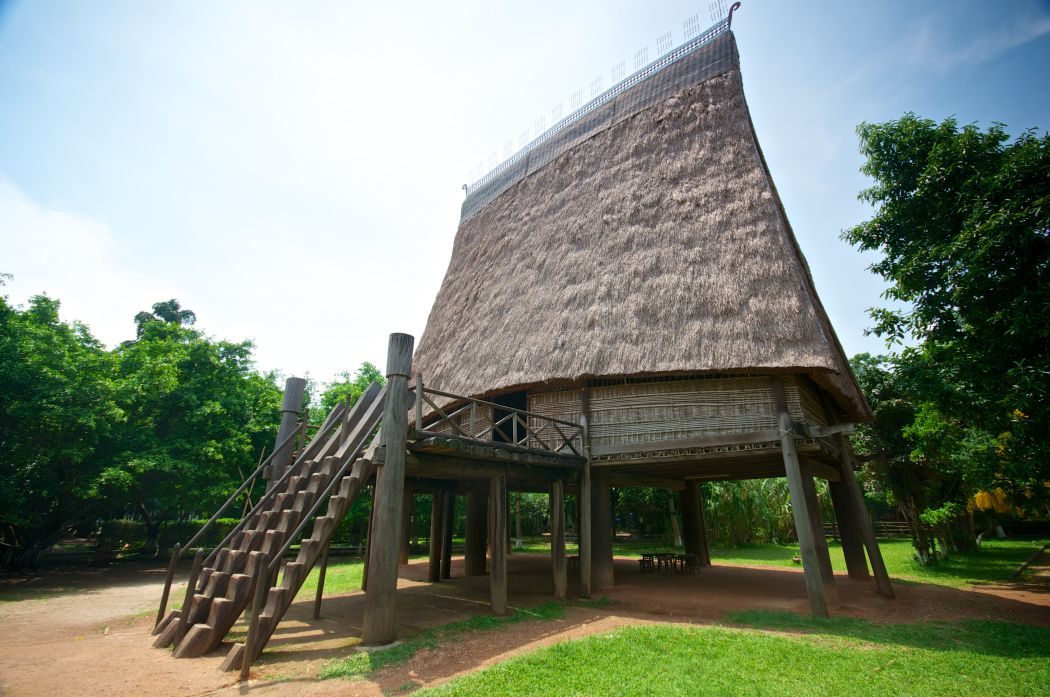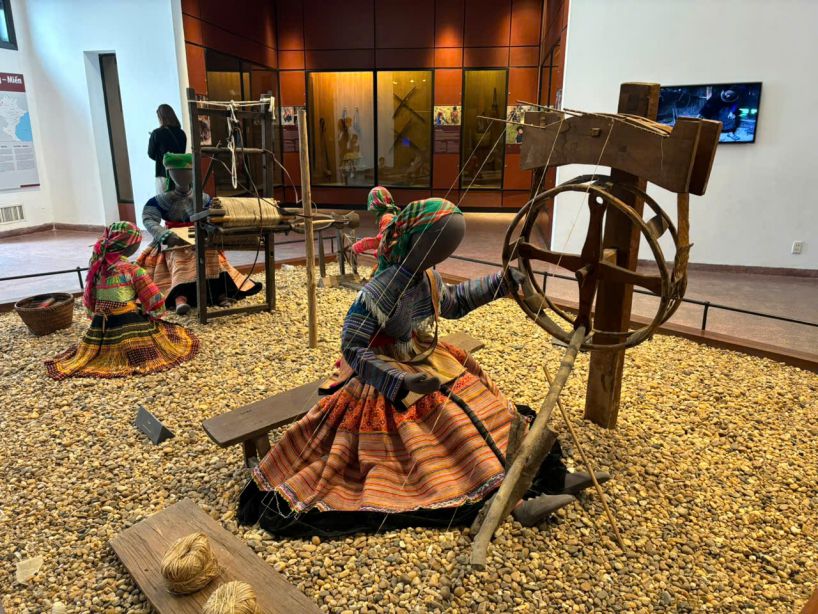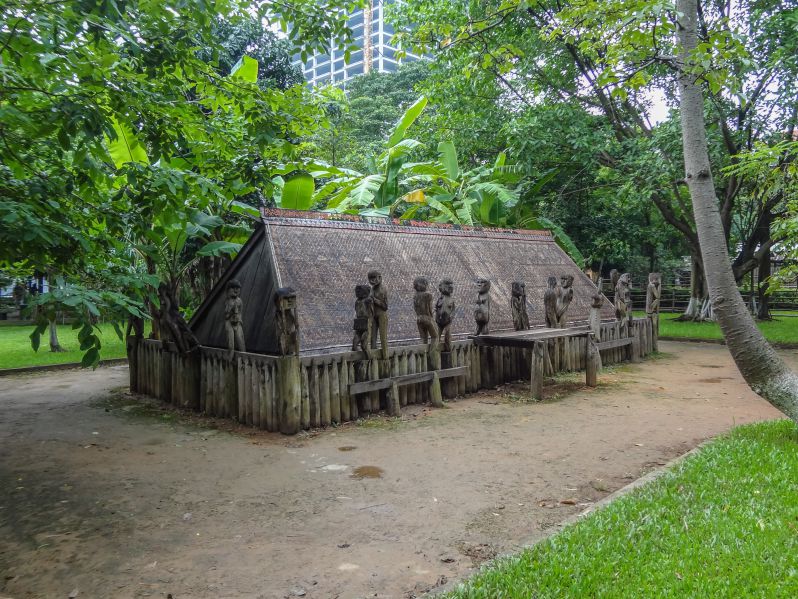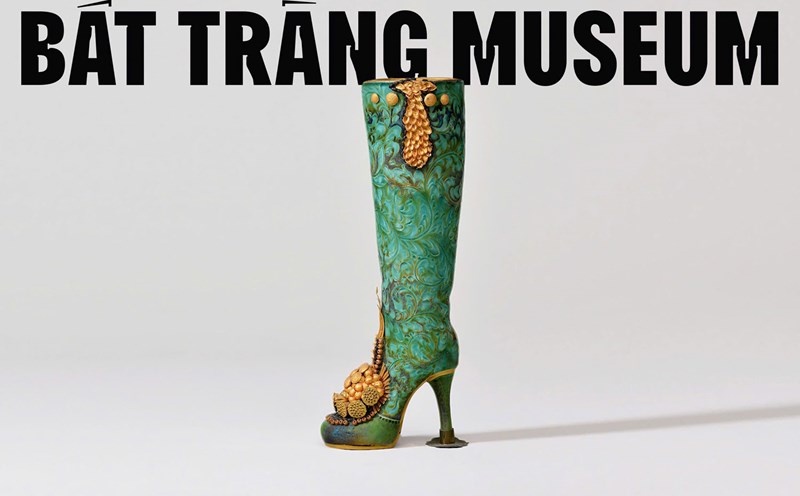A place to preserve Vietnamese cultural values
Since 1981, the issue of culture and ethnicity has been focused on by researchers and the Government, and the process of establishing the Vietnam Museum of Ethnology also began here. On October 24, 1995, the Prime Minister issued Decision No. 689-TTg on the establishment of the Vietnam Museum of Ethnology. The museum was inaugurated on November 12, 1997, on the occasion of the Summit of French-speaking countries held in Hanoi. On November 13, 1997, the museum officially opened for visitors.
The Vietnam Museum of Ethnology is located on a land area of nearly 4.5 hectares on Nguyen Van Huyen Street, Quan Hoa Ward, Cau Giay District, Hanoi. The museum consists of 3 main exhibition spaces, with the first exhibition space put into service since 1997, a 2-storey building called "Drum", designed based on the image of Dong Son bronze drum with a total area of 2,000m².
The second exhibition area is called “Architecture Garden” with an area of about 20,000m², built from 1998 to 2006. The “Architecture Garden” area mainly includes 10 typical folk architectural works of 10 ethnic groups in Vietnam. Not only is the architecture typical of each ethnic group, each architecture has its own unique features, telling stories about the customs and practices of different communities.
The third exhibition space is a 4-storey building, named “Kite”, which was put into operation at the end of 2013. The building has a space imbued with the traditional culture of Southeast Asia, namely the image of a kite. The exhibition space here includes topics related to the unique cultural features of the region.

Cultural and educational background story
In the era of advanced science and technology, social culture development, the museum's display system has also become richer. At the Vietnam Museum of Ethnology, there are currently 3 different display directions including: permanent display, temporary display and virtual display.
The permanent exhibition includes: Tens of thousands of artifacts, films, audio tapes, video tapes. The system of exhibits is classified based on different criteria such as: ethnicity, tools, costumes, jewelry, musical instruments, religion - beliefs and other socio-cultural activities. The artifacts include many different materials such as: fabric, wood, rattan, bamboo. Through the artifacts, architecture, stories through the artifacts, linked together as if recreating the event in front of visitors. In order to provide full information to visitors, the annotations are presented in 3 languages (Vietnamese, English and French).
Temporary exhibitions are organized with different themes, lasting for a short period of time. Over the years, the Vietnam Museum of Ethnology has organized many temporary exhibitions on domestic and international topics such as: "Central Highlands in the 50s of the 20th century"; "From Heart to Soul"; "The Doors of Yuendumu". In particular, the museum also held a digital exhibition with the theme "Italian routes - Mountain landscape, mountain climbing, climate change".

Exhibitions and tours at the Museum of Ethnology are held from Tuesday to Sunday every week, especially on weekends there are experience programs. Every Saturday and Sunday, the museum organizes water puppet shows and festival and art activities to serve visitors. Especially with the program and performance activities, it partly contributes to the basic awareness of generations of students about the origin of the nation's folk culture.
One of the active and typical activities of the Vietnam Museum of Ethnology is the models and programs that combine sightseeing with education. Educational activities are connected with schools to build appropriate sightseeing routes for each level of education, while providing documents and knowledge for teachers on local cultural heritage education.
Not only paying attention to education from school, the family aspect is also focused, activities and experiences for families are becoming more and more diverse. Experiential activities for family groups contribute to closer ties between family members, while increasing the quality of national cultural education for each child.

Activities also take place in the rooms: Cinema room, multimedia room, especially in educational activities is the discovery room for children. Here the exhibits and equipment are uniquely designed, attracting the attention of children. Not only simply participating in fun activities, but also increasing understanding of the culture of Vietnam in particular and Southeast Asia, Asia in general.
In addition to exhibitions and cultural and heritage education activities, the Vietnam Museum of Ethnology also has very active research activities. Seminars, conferences, publications and magazines always receive great attention from domestic and international cultural researchers.
Only about 5km west of Hanoi center, with a large space, unique and massive display system, Vietnam Museum of Ethnology attracts great attention from domestic and international visitors. This is a familiar address for families, schools, groups of students, students choose as a destination every weekend to have fun, study and learn about ethnic culture on the land of "Miniature Vietnamese Culture".











